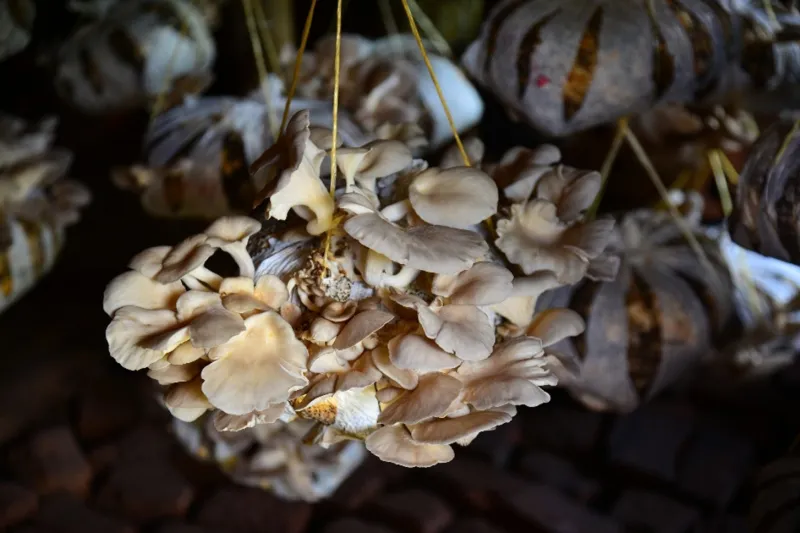In Uganda’s Rukiga District, a simple oyster mushroom is quietly transforming rural economies—and helping to protect one of Africa’s most iconic birds, the Endangered Grey Crowned Crane.
What started as an ambitious idea by the International Crane Foundation (ICF) has become a growing success story. Partnering with three local farming groups, ICF introduced mushroom cultivation as a sustainable alternative to traditional farming practices that were threatening vital wetland habitats—essential breeding grounds for cranes.
Traditionally, communities in the area rely on crops like beans, Irish potatoes, and sorghum, which take months to yield modest returns. Struggling with limited land and poor soil, many farmers were forced to encroach on wetlands to survive. But mushrooms offered a new path.
“Before growing mushrooms, I didn’t think anyone would buy them because they were unfamiliar in our villages,” recalls Tumuhimbise Kedress from Rwempango Tukwataniise. “People used to laugh when they saw me going to the growing site.” Now, she and many others are earning steady incomes—and changing minds.
Unlike sorghum, which takes six months to generate around $53, mushrooms can bring in over $125 in just three months from a $31 investment in spawn. The crop is grown indoors, year-round, and doesn’t require cutting down wetland vegetation, making it a perfect solution for both conservation and income generation.
“This initiative is not just about money—it’s about dignity, food security, and environmental stewardship,” said Patrick Engoru, ICF’s Uganda Country Manager. “Communities now have a livelihood that lifts them out of poverty without harming the wetlands or the cranes.”
The benefits are tangible. Families are sending children to school, accessing medical care, and improving their homes. Ellen, a widow, is now able to feed her children and fix up her house. Vanansio, a retired teacher, says mushroom farming has given him hope and the ability to support his children’s education.
Skeptics have turned into customers, realizing mushrooms are not only nutritious but also cost-effective, often replacing meat in traditional Ugandan dishes like katogo.
Beyond personal success, the environmental impact has been profound. Agricultural by-products like sorghum husks, once burned as waste, are now used as mushroom-growing substrate. Though cooking still requires firewood, the overall ecological footprint has improved. Most importantly, ICF reports a noticeable decline in wetland encroachment in areas where mushroom cultivation has taken root.
“Healthier wetlands mean more cranes, cleaner water, and more resilient farming communities,” said Engoru. “It’s a win-win.”
This initiative is part of ICF’s broader conservation approach—working hand in hand with communities to solve multiple challenges at once: improving livelihoods, strengthening food security, empowering women, and protecting endangered species.
Support for the program comes from donations and members worldwide, proving that even small contributions can have far-reaching effects. As cranes return to the restored wetlands, communities are developing a renewed respect for the birds and the landscapes they share.
From its headquarters in Baraboo, Wisconsin, to offices across Africa and Asia, the International Crane Foundation works globally to safeguard cranes and their habitats. With teams in Uganda, Kenya, Zambia, South Africa, China, and beyond, ICF continues to lead with knowledge, partnerships, and innovation to create a world where people and wildlife thrive together.


